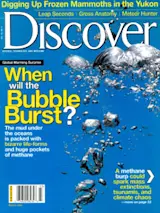EXHIBITS
Lifestyles of the Lush and Lavish The Nabataeans of Petra ruled a far-flung trading empire that was fueled by one simple liquid: waterBy Eric Powell
Petra: Lost City of Stone
American Museum of Natural History, New York
Two panthers peer at each other with teeth bared and limbs taut, ready to pounce. Yet the muscular felines are fated to remain forever immobile, for they form the handles of a three-foot-tall marble vase unearthed near the mountainous desert of Wadi ‘Arabah in southern Jordan. The vase now sits, cracked but still imposing, in a corner of the American Museum of Natural History’s elegant exhibition Petra: Lost City of Stone. The urn most likely graced a luxuriant garden or opulent villa owned by one of Petra’s wealthy residents and later served as a ritual cleansing basin at a Byzantine church destroyed by fire in the sixth century A.D.
How the people ...














